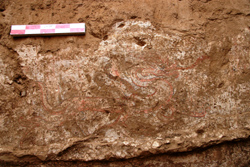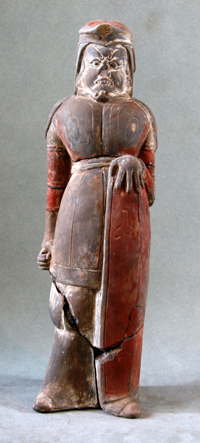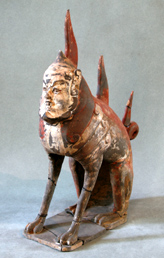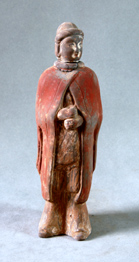The Afterlife of Aristocracy : The Eastern Wei Royal Yuan You Tomb at Hebei
From:Chinese Archaeology NetWriter:Date:2008-01-29
At the request of the Office of Cultural Relics Protection (under Hebei Provincial Bureau of Cultural Relics) in the Nan Shui Bei Diao (Diverting Water from South to North) Project, Hebei Archaeological Team in the Institute of Archaeology CASS excavated Tomb M 003 in a Northern dynasties grave site located in Cixian County (Hebei) from September, 2006 through July, 2007.


The tomb is located 9 kilometers to the south of Cixian county seat, 1.1 kilometers to the west of the Jianguang railway, and 7 kilometers east of Yecheng site. Partial tomb mound has survived on the ground, measuring 1.8 meters high. The tomb is north-south oriented, consisting of a ramp, compartments, ventilation shafts, and a tomb chamber, with a total length of 25.5 meters. An outer coffin and an inner coffin located at the west section of the tomb chamber are in the state of complete decay. One skeleton was found inside the coffin. To the east of the coffin are burial objects, including pottery vessels, ceramics, pottery figurines, miniature buildings, and an epitaph. Among more than 190 pieces of burial objects, 144 are painted figurines.



Because the ceiling of the tomb had long collapsed, only portions of the murals have survived on the four side walls. Despite their fragmentary state, the contents and composition of the murals are easy to figure out. On the south section of the east wall is a painted blue dragon, while the painting on counterpart of the west wall has fallen off. Presumably it was originally a white tiger. One official figure is painted behind the dragon and the tiger. The paintings are all decayed from the chest above and only their vermillion robe and bell-bottomed pants can be seen. On the north wall of the tomb chamber is a painted three-footed bed, on which the tomb occupant sits with a seven-panel screen behind him. Murals on the south wall can be divided into two sections that are painted to the east and the west of the entrance. The surviving traces indicate that originally one figure was painted on each section. On the east, west, and north walls are painted three-pillared architecture. On top of the pillars are painted lintel and 人–shaped brackets. It is possible that roof was originally painted atop.
Under the sealing wall at the entrance was found a stone epitaph. It tells that the tomb occupant is the royal figure Yuan You, Xuzhou governor who died in 537 CE.
This discovery is significant for future research. The epitaph helps to elucidate the territory of distribution of Eastern Wei imperial tombs. Since it is the only Northern dynasties tomb that has not been disturbed, the combination of burial objects is intact and in a good state of preservation. They constitute some invaluable materials for reconstructing the social norms and techniques of the time. The exceptional murals and skillfully modeled figurines not only reflect the funerary customs and artistic style during the Eastern Wei, they will also provide valuable data for our study on the general artistic trends in the Northern dynasties.

